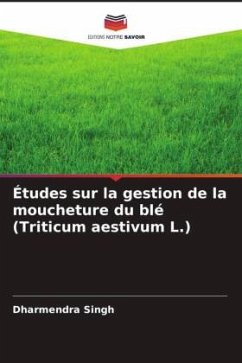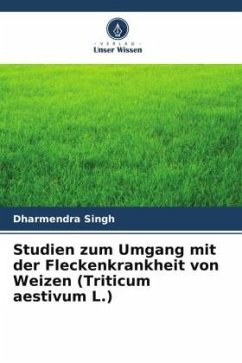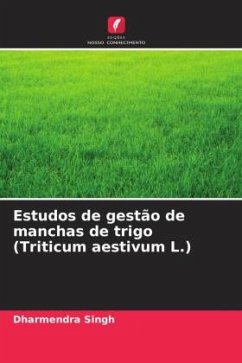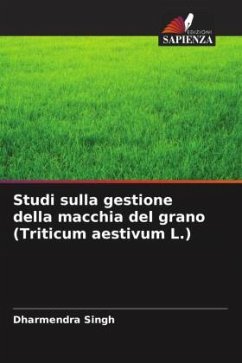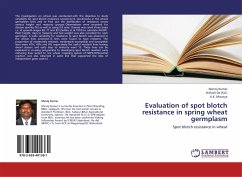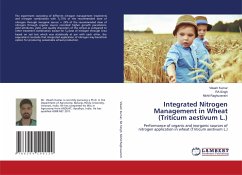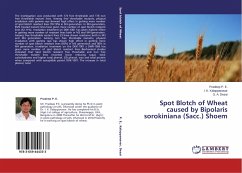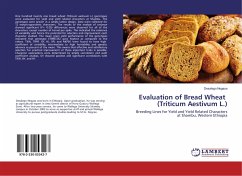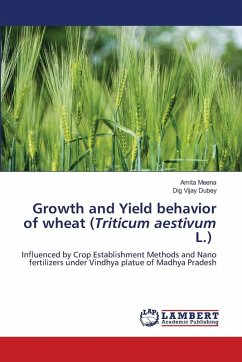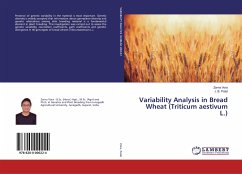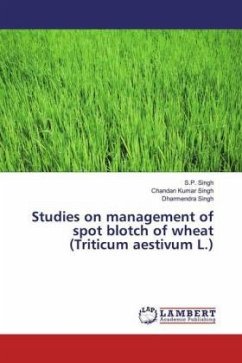
Studies on management of spot blotch of wheat (Triticum aestivum L.)
Versandkostenfrei!
Versandfertig in 6-10 Tagen
36,99 €
inkl. MwSt.

PAYBACK Punkte
18 °P sammeln!
Wheat (Triticum aestivum L.) is the most important cereal crop after rice in India and is well recognized as a world's major cereal crops and staple food of many regions, grown under both irrigated and rain-fed conditions. In India, wheat covered about 30.23 mha area with production of 93.5 million tonnes during the recent past 2015-16 Rabi season and accounts for abouts 38 per cent of the county's total food grains production as per the recent 4th advanced Estimates from Directorate of Economics and Statistics (DES), Ministry of Agriculture and Farmers Welfare (MoA &FW), India During the year...
Wheat (Triticum aestivum L.) is the most important cereal crop after rice in India and is well recognized as a world's major cereal crops and staple food of many regions, grown under both irrigated and rain-fed conditions. In India, wheat covered about 30.23 mha area with production of 93.5 million tonnes during the recent past 2015-16 Rabi season and accounts for abouts 38 per cent of the county's total food grains production as per the recent 4th advanced Estimates from Directorate of Economics and Statistics (DES), Ministry of Agriculture and Farmers Welfare (MoA &FW), India During the year 2015-16 in Uttar Pradesh, area was 9.645 million ha. with production of 26.87 million tones and average productivity was 27.86 q/ha., Wheat crop suffers from a number of devastating diseases caused by fungi, bacteria, viruses, mycoplasma, nematodes and environmental factors. However, in eastern Uttar Pradesh wheat crop is mostly affected by fungal diseases, such as black rust [Puccinia graminis f.sp. tritici (Pers.) Eriks and Henn], brown rust (Puccinia recondita Rob. Ex. Desm), yellow rust (Puccinia striiformis West), foliar blights (Helminthosporium sativum Pamm. King & Bakke.



